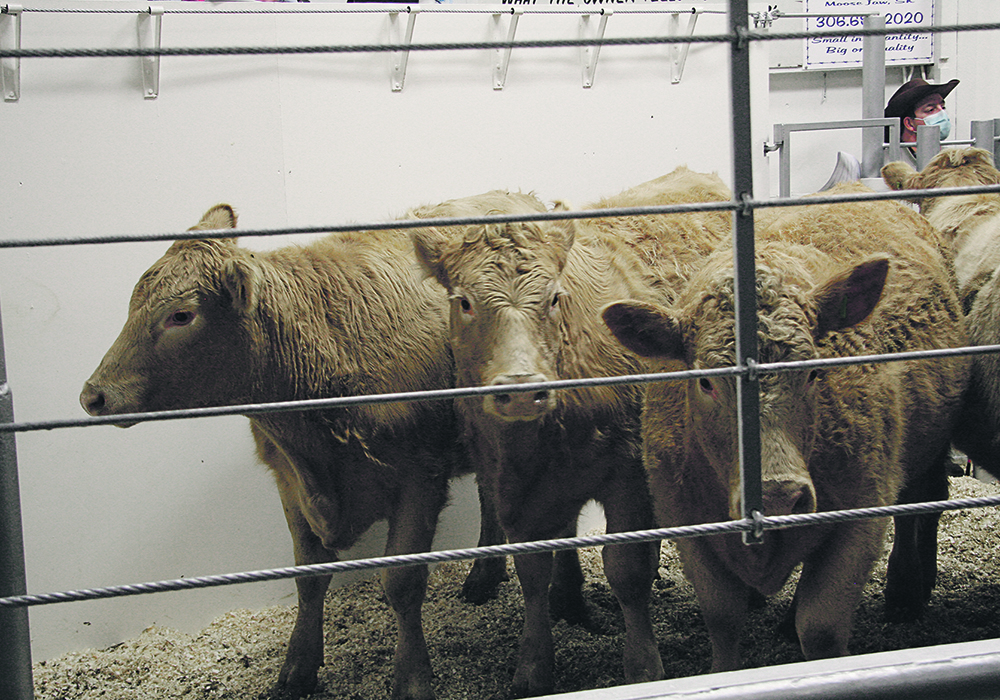The movement of breeding stock — bulls, heifers and bred cows — has increased considerably over the years and will continue to evolve as breeders strive to improve genetics.
Every time we buy or sell cattle, it creates an opportunity to communicate health information, such as which vaccines have been administered, nutrition background and other management procedures.
This can improve overall herd health, while also reducing disease transmission.
When an animal’s health status is not clearly spelled out, producers must ask the right questions to ensure new purchases fit into the herd’s health program.
Read Also

Beef cattle more prone to trace mineral deficiencies
The trace mineral status of our cows and calves is a significant challenge for western Canadian producers and veterinarians.
Broad statements seen in many bull or female sale catalogues, such as “complete herd health program” or “tight herd health program” or cattle are vaccinated for all the “common diseases,” tell us nothing and can be misleading.
What you really need to know as a buyer is whether all the management from a disease prevention standpoint has been carried out as you would have done in your own herd.
If more has been done, great. If that is the case, then it may be worth checking into whether it is a good idea to carry out extra procedures in your herd.
If the just-purchased cattle have had less processing done than the animals in your herd, then you can administer the vaccines that are missing.
Different herds have different needs and you know the needs of your herd.
With bulls, they have all passed a semen test, unless it was a deferred bull, in which case it needs to be retested.
We often don’t know an animal’s health status unless we ask. Some catalogues have it listed, but many say nothing or they use one of the broad, generalized statements previously listed.
Those that do provide animal health status must indicate when the value-added vaccinations were given and whether they have had the initial and booster shots. That is important as with all vaccines, including the respiratory clostridial and scours vaccines for cows and heifers. After a priming shot, they need a booster shot in the first year.
It is always good to clarify if both the initial shots and priming shots were given. If not, you should arrange to have the booster shot when most appropriate. Missed booster shots are how some vaccine breaks occur.
At sales where top-end heifers are offered, they often have been palpated. Heifers, like bulls, are a long-term investment so palpating for reproductive soundness, and eliminating the possibilities of too-small pelvic size and bred or freemartin heifers is wise.
Traditional bred cow sales have dwindled over the years but health checks are still imperative.
With bred heifers, as a buyer you want to know their vaccination history, which tells us what the management of the originating herd was like.
Veterinarians will try and get close on gestation when pregnancy checking but that is not easy. If they have an observed artificial insemination or have the natural breeding date, they can get close. At least if they know when the bulls were pulled, it can help narrow down a date.
Pregnancy testing must be done early in gestation to be accurate.
When indicating vaccine history, many producers provide the trade name of the vaccine. You need to know what is in the trade name vaccines to determine which diseases the animals are protected for.
Other processing factors, such as deworming, lice treatments and nutritional history, are great to know.
Health history is important, which is why management procedure questions are asked on insurance forms. It would look foolish for insurance companies to pay for animal deaths caused by very preventable diseases.
When thinking about health history we can’t take anything for granted. For example, some top-end producers have the possibility of exporting genetics to the European Union, and may not vaccinate for infectious bovine rhinotracheitis (IBR). They may not vaccinate the entire calf crop and that leaves the calves susceptible.
It is good to specifically ask about the IBR status. If the seller doesn’t vaccinate for IBR, that could mean the animals are also not vaccinated for bovine viral diarrhea (BVD) and bovine respiratory syncytial virus (BRSV), which are often administered together as a multivalent vaccine.
However, to avoid IBR titers and still have their animals protected, some producers have incorporated intranasal vaccines, which can avoid this conflict and satisfies the health needs of North America and the EU.
To improve the health of the cattle we need to ask the right questions when we buy cattle and we must be transparent and offer full disclosure when we sell.
Roy Lewis works as a veterinarian in Alberta.















